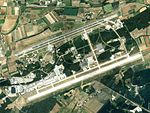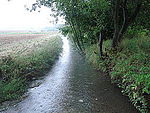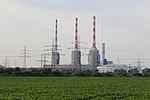Oppidum of Manching
Archaeological sites in GermanyCeltic archaeological sitesFormer populated places in GermanyLa Tène cultureOppida ... and 1 more
Pfaffenhofen (district)

The Oppidum of Manching (German: Oppidum von Manching) was a large Celtic proto-urban or city-like settlement at modern-day Manching, near Ingolstadt, in Bavaria, Germany. The Iron Age town (or oppidum) was founded in the 3rd century BC and existed until c. 50-30 BC. It reached its largest extent during the late La Tène period (late 2nd century BC), when it had a size of 380 hectares. At that time, 5,000 to 10,000 people lived within its 7.2 km walls. Thus, the Manching oppidum was one of the largest settlements north of the Alps. The ancient name of the site is unknown, but it is assumed that it was the central site of the Celtic Vindelici tribe.
Excerpt from the Wikipedia article Oppidum of Manching (License: CC BY-SA 3.0, Authors, Images).Oppidum of Manching
B 16,
Geographical coordinates (GPS) Address Nearby Places Show on map
Geographical coordinates (GPS)
| Latitude | Longitude |
|---|---|
| N 48.716666666667 ° | E 11.516666666667 ° |
Address
B 16
85077 , Manching
Bavaria, Germany
Open on Google Maps










